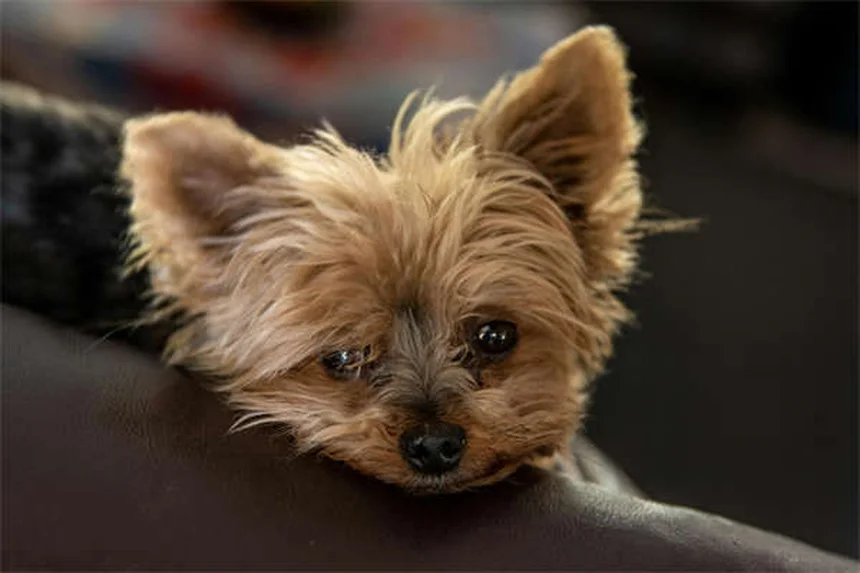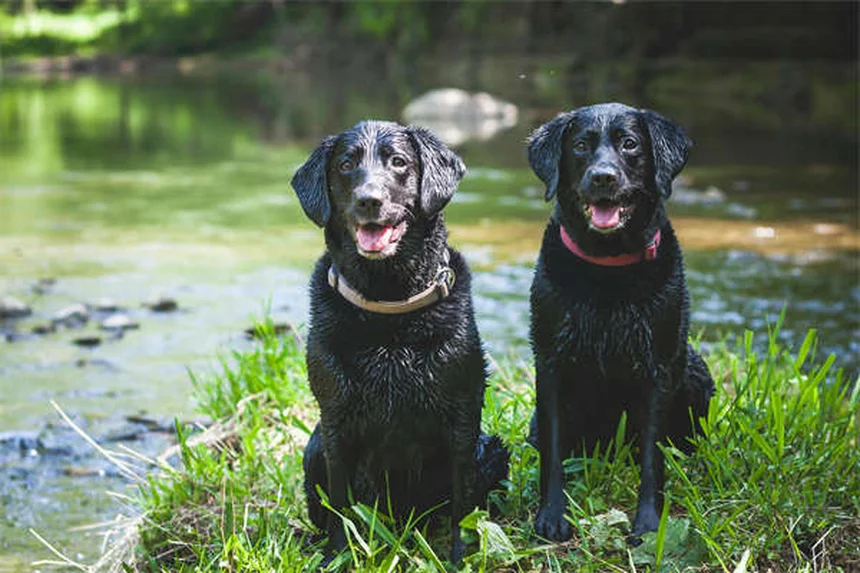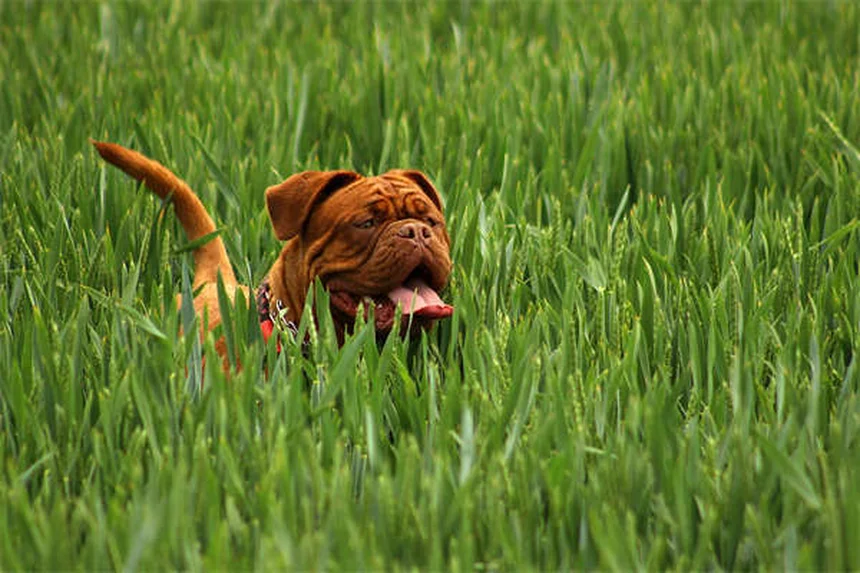Why won't my cat eat? The answer is simple: something's wrong, and you need to figure it out fast! As a vet tech for over 10 years, I've seen countless cats stop eating for various reasons - from simple stress to life-threatening illnesses. Your cat's appetite is like a health barometer, and when it drops, we need to act quickly.
In this guide, I'll walk you through the 7 most common reasons cats refuse food and give you practical solutions you can try at home. But remember - if your cat hasn't eaten for more than 24 hours (or 12 hours for kittens), drop everything and call your vet. Trust me, I've seen too many cases where waiting made things much worse!
- 1、Understanding Your Cat's Eating Habits
- 2、Top Reasons Your Cat Might Be Off Their Food
- 3、Kitten-Specific Feeding Challenges
- 4、Emergency Red Flags You Can't Ignore
- 5、Creative Solutions for Finicky Felines
- 6、The Emotional Side of Fasting
- 7、The Science Behind Feline Taste Buds
- 8、The Water Drinking Dilemma
- 9、The Senior Cat Feeding Challenge
- 10、The Raw Food Debate
- 11、The Psychology of Feeding Time
- 12、FAQs
Understanding Your Cat's Eating Habits
Why Your Cat's Appetite Matters
Let me tell you something - your cat's food bowl is like a mood ring! When Fluffy turns up her nose at dinner, she's trying to tell you something important. Changes in eating habits often signal health issues, stress, or environmental changes we need to address.
Did you know cats can develop serious liver problems in just 48 hours without food? That's why we need to act fast when our feline friends stop eating. I've seen too many cases where owners waited too long, and trust me, you don't want to be in that emergency vet waiting room at 2 AM!
When to Hit the Panic Button
Here's my golden rule: Adult cats shouldn't skip meals for more than 24 hours, and kittens get just 12 hours before I start worrying. Keep this chart handy:
| Cat Type | Maximum Time Without Food | Action Required |
|---|---|---|
| Healthy Adult Cat | 24 hours | Monitor closely |
| Kitten (under 6 months) | 12 hours | Call vet if no improvement |
| Senior Cat (7+ years) | 18 hours | Schedule vet visit |
Top Reasons Your Cat Might Be Off Their Food
 Photos provided by pixabay
Photos provided by pixabay
Health Issues That Kill Appetite
Ever had a cold so bad you couldn't taste your morning coffee? That's exactly how upper respiratory infections make cats feel. When their nose gets stuffy, food just doesn't smell appealing anymore.
But here's something most cat owners don't realize - dental problems cause more missed meals than you'd think. Imagine trying to eat pizza with a toothache! Watch for these warning signs:
- Bad breath that could knock you over
- Drooling like they're watching a tuna commercial
- Pawing at their mouth like they've got spinach stuck in their teeth
The Picky Eater Phenomenon
Is your cat the Gordon Ramsay of the feline world? Some cats develop food preferences so specific they'd put a Michelin-starred chef to shame. I once had a client whose cat would only eat salmon-flavored pâté served at exactly 72°F!
Here's my pro tip: rotate between 3-4 different foods from kittenhood. This prevents your cat from becoming that "I'll only eat one brand" nightmare we all dread. Variety isn't just the spice of life - it's insurance against future hunger strikes!
Kitten-Specific Feeding Challenges
The Weaning Woes
Transitioning kittens to solid food is like teaching a toddler to use utensils - messy but necessary! Between 6-8 weeks, kittens should be exploring different textures. Try these options:
- Pâté-style wet food (easy to lap up)
- Broth with small meat chunks
- Kibble softened with warm water
Pro tip: Warm the food to body temperature (about 100°F) to enhance the smell. Kittens eat with their noses first!
 Photos provided by pixabay
Photos provided by pixabay
Health Issues That Kill Appetite
Did you know kittens can get bullied away from food bowls? In multi-pet households, the little ones often need their own safe dining area. I recommend:
- Separate feeding stations in quiet corners
- Elevated bowls for timid eaters
- Supervised meal times until confidence builds
Emergency Red Flags You Can't Ignore
When "Not Hungry" Becomes Dangerous
Here's a scary thought - hepatic lipidosis (fatty liver disease) can develop in as little as two days without food. This condition turns your cat's liver into a failing fat-processing plant. Watch for these emergency signs:
- Yellow gums or eye whites (jaundice)
- Lethargy worse than a teenager on Monday morning
- Vomiting that won't quit
The Vet Visit Checklist
Before rushing to the clinic, gather this info to help your vet:
- When the appetite changed
- Any vomiting or diarrhea episodes
- Recent environmental changes
- Current medications
- Favorite treats they'll still eat
Creative Solutions for Finicky Felines
 Photos provided by pixabay
Photos provided by pixabay
Health Issues That Kill Appetite
Would you eat cold pizza straight from the fridge? Neither does your cat! Try these appetite-boosting tricks:
- Warm wet food for 10 seconds (test on your wrist first!)
- Add a teaspoon of low-sodium chicken broth
- Serve in shallow dishes to avoid whisker fatigue
- Try hand-feeding small pieces as "tasters"
The Rotation Diet Strategy
Here's a secret from my years as a vet tech - cats get bored with flavors faster than kids with toys! Rotate between these protein sources to keep meals exciting:
| Protein | Best Texture | Pro Tip |
|---|---|---|
| Chicken | Shredded | Add warm broth |
| Fish | Flaked | Serve at room temp |
| Beef | Pâté | Mix with favorite kibble |
The Emotional Side of Fasting
Stress - The Silent Appetite Killer
Did your cat stop eating after you moved furniture or got a new pet? Cats are creatures of habit - changes we barely notice can send them into a hunger strike. Common stressors include:
- New pets (even fish tanks!)
- Changed litter box locations
- Construction noises
- House guests
Creating a Stress-Free Dining Experience
Transform mealtime into a spa experience with these tips:
- Feed in quiet, low-traffic areas
- Use pheromone diffusers near feeding stations
- Maintain consistent routines
- Try puzzle feeders to engage their hunting instincts
Remember - patience is key. It might take 2-3 weeks for stressed cats to return to normal eating patterns after major changes.
The Science Behind Feline Taste Buds
Why Cats Can't Taste Sweetness
Here's a fun fact that'll blow your mind - your cat's tongue doesn't have sweet receptors! They literally can't taste sugar like we can. That's why your ice cream doesn't interest them (unless it's got meat chunks in it!).
But wait - doesn't that make you wonder why some cats go crazy for whipped cream? Turns out they're after the fat content, not the sweetness. Their taste buds evolved to detect amino acids in meat, not carbohydrates. Next time your cat snubs your dessert, remember - they're just being true to their biology!
The Protein Obsession Explained
Cats need 2-3 times more protein than dogs. I like to joke they're the bodybuilders of the pet world! Their bodies break down protein for energy instead of carbs. Check out these crazy comparisons:
| Nutrient | Cat Requirement | Dog Requirement |
|---|---|---|
| Protein | 30-40% of diet | 18-25% of diet |
| Fat | 15-20% | 10-15% |
| Carbs | Under 10% | 30-70% |
The Water Drinking Dilemma
Why Cats Are Terrible Hydrators
Ever notice how your cat barely touches their water bowl? Here's the wild reason - cats evolved from desert animals that got most moisture from prey. That's why they have such weak thirst drives compared to dogs.
But modern dry food diets create a hydration crisis! Kibble contains less than 10% moisture versus 70% in prey. This mismatch explains why so many house cats develop urinary and kidney issues. I always tell clients - adding wet food is like giving your cat an internal car wash!
Creative Hydration Solutions
Let's get your cat drinking like they're in a commercial! Try these vet-approved tricks:
- Place water bowls away from food (cats instinctively avoid water near "contaminated" areas)
- Use wide, shallow bowls to prevent whisker stress
- Add ice cubes for entertainment value
- Try a cat water fountain - the movement triggers drinking instincts
The Senior Cat Feeding Challenge
When Aging Changes Appetite
Did you know a 15-year-old cat's sense of smell is only about 27% as strong as a kitten's? That's like eating with a clothespin on your nose! This explains why older cats often lose interest in food.
Here's what I recommend for golden oldies:
- Warm food to enhance aroma
- Try stronger-smelling proteins like fish or liver
- Elevate bowls to reduce neck strain
- Consider smaller, more frequent meals
The Dental Health Connection
By age 3, 70% of cats show signs of dental disease. Imagine trying to eat steak with a toothache! Regular dental checkups are crucial, but here are some at-home solutions:
| Problem | Food Solution | Alternative |
|---|---|---|
| Sore gums | Pâté-style wet food | Soaked kibble mush |
| Missing teeth | Shredded meat in gravy | Finely minced options |
| Jaw pain | Liquid recovery diets | Syringe feeding (vet supervised) |
The Raw Food Debate
Pros of Going Raw
Some owners swear their cats transform into mini tigers on raw diets. There's truth here - raw food mimics a cat's natural prey diet. Potential benefits include:
- Shinier coats (like they got a salon treatment)
- Smaller, less smelly poops (everyone wins!)
- Better hydration from meat moisture
- Reduced carbohydrates
The Safety Concerns
But hold your horses - raw feeding isn't all rainbows. The FDA reports significantly higher bacterial contamination risks in raw pet foods. We're talking salmonella and listeria that could make both you and Fluffy sick.
If you're considering raw, please:
- Consult your vet first
- Source from reputable suppliers
- Practice extreme kitchen hygiene
- Consider high-pressure pasteurized options
The Psychology of Feeding Time
Why Scheduled Meals Beat Free Feeding
Free feeding is like leaving the fridge open 24/7 - convenient but problematic! Scheduled meals:
- Prevent obesity (no all-you-can-eat buffet)
- Allow better monitoring of appetite
- Satisfy hunting instincts through routine
- Reduce food guarding behaviors
The Hunting Simulation Solution
Here's a game-changer - turn mealtime into hunting time! Try these enrichment ideas:
- Puzzle feeders that make them "work" for kibble
- Hiding small portions around the house
- Using food-dispensing toys
- Interactive wand toys followed by meals
I've seen anxious cats completely transform when meals become engaging activities instead of passive eating. It taps into their natural predator instincts!
E.g. :6 Reasons Why Your Cat Is Not Eating and What To Do | PetMD
FAQs
Q: How long can a cat safely go without eating?
A: Here's the hard truth - cats shouldn't skip meals for more than 24 hours. Unlike dogs, cats can develop serious liver problems (hepatic lipidosis) in just 48 hours without food. Kittens have even less time - just 12 hours without eating is cause for concern. I always tell my clients: "When in doubt, check it out!" If your adult cat hasn't eaten for a full day or your kitten misses two meals in a row, it's vet time. Don't wait until you see other symptoms like vomiting or lethargy - by then, the situation could be critical.
Q: What are some home remedies to get my cat to eat?
A: Before you panic, try these vet-approved tricks I've used successfully for years: 1) Warm wet food for 10 seconds to enhance the smell (test it on your wrist first!), 2) Add a teaspoon of low-sodium chicken broth to dry food, 3) Offer different textures - some cats prefer pâté while others like chunks in gravy. The key is making food irresistible again. But here's my professional warning: if these tricks don't work within 12 hours, or if your cat shows any other symptoms, skip the home remedies and head straight to your vet.
Q: Can stress really make my cat stop eating?
A: Absolutely! Cats are creatures of habit, and changes we barely notice can trigger a hunger strike. I've seen cats stop eating because of new furniture, house guests, or even a different laundry detergent smell! Common stressors include new pets, changed feeding locations, or loud noises. The solution? Create a calm dining area away from household traffic, use pheromone diffusers, and maintain consistent routines. Most stressed cats return to normal eating within 2-3 weeks after the change - but if they don't, consult your vet.
Q: My kitten isn't eating - is this normal?
A: While it's common for kittens to be picky during weaning (6-8 weeks old), kittens should never skip meals. Their tiny bodies burn energy fast! Try these tricks: 1) Warm the food to body temperature (about 100°F), 2) Offer different textures - some kittens prefer broth while others like softened kibble, 3) Make sure other pets aren't intimidating them at mealtime. But here's the deal - if your kitten hasn't eaten in 12 hours or shows any lethargy, don't experiment - call your vet immediately. Kittens can crash fast!
Q: When is not eating an emergency?
A: Red flags that mean go to the vet now: 1) No food for 24 hours (adults) or 12 hours (kittens), 2) Yellow gums or eyes (jaundice), 3) Repeated vomiting or diarrhea, 4) Extreme lethargy. Also watch for subtle signs like weight loss or changes in water consumption. As someone who's worked emergency shifts, I can't stress this enough: with cats, it's always better to be safe than sorry. That "wait and see" approach can lead to expensive hospital stays - or worse.


